Solar Panel Maintenance Checklist: The Only Guide You Will Ever Need!
Regular solar panel maintenance is essential for maximizing energy output and extending the system’s lifespan. Inspections should focus on cleaning panels, checking electrical connections, and monitoring inverters for errors or overheating. Preventive measures, such as verifying wiring and ensuring components are properly grounded, help avoid inefficiencies and costly repairs. Tailoring a seasonal maintenance schedule ensures optimal performance year-round, while balancing DIY tasks with professional assistance safeguards against complex system issues. Following a comprehensive checklist ensures long-term efficiency and safe operation of your solar power system.
Table of Contents
- Comprehensive Solar Panel Maintenance Checklist
- Solar System Maintenance Checklist
- Preventive Maintenance: How To Ensure Longevity and Efficiency
- PV Maintenance: Key Components to Monitor
- Monitoring System Performance
- Special Considerations for Solar Street Light Maintenance
- Professional Maintenance vs. DIY
- Conclusion
Comprehensive Solar Panel Maintenance Checklist
A solar panel maintenance checklist is essential for ensuring optimal performance. Regular inspections should include checking for cracks, debris, or shading issues. Follow a solar panel cleaning checklist, removing dirt and grime to maximize energy absorption. A solar panel preventive maintenance checklist involves checking electrical connections, ensuring they’re secure, and inspecting for corrosion or loose wiring.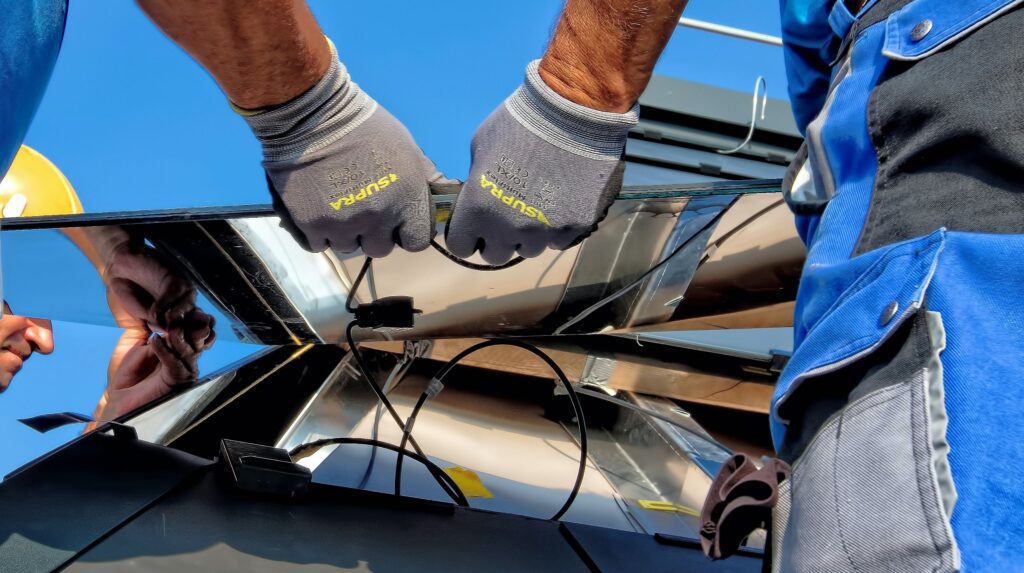
How to Clean Your Solar Panels for Maximum Efficiency
Cleaning your solar panels properly is crucial for maintaining maximum sunlight absorption and ensuring long-term efficiency. Begin by following a solar panel cleaning checklist to prepare for the process. First, ensure safety by turning off the solar power system before any cleaning. Use a non-abrasive sponge or soft cloth to gently remove dirt, dust, and bird droppings from the surface. Avoid using harsh chemicals, as they may damage the panels’ protective coating.
For optimal results, clean the panels early in the morning or late in the afternoon to avoid the intense midday heat, which could cause water to evaporate quickly, leaving streaks. Always use clean, lukewarm water mixed with mild soap if necessary. Rinse thoroughly to prevent soap residue, which can reduce efficiency. For hard-to-reach areas, a long-handled soft brush or squeegee can be helpful. Ensuring the panels are clean and free of debris will allow them to absorb the maximum amount of sunlight, boosting energy output.
How To Verify Connections and Cables
Verifying connections and cables is essential to maintaining your solar system’s efficiency and safety. While a solar panel cleaning checklist often emphasizes surface cleaning, checking the connections between panels, the mounting system, and wiring is equally important. Loose or corroded connections can cause energy loss and pose fire risks.
Start by inspecting all wiring to ensure it’s securely connected. Look for common issues such as loose wires, which can lead to poor electrical conductivity, or frayed cables, which increase the chance of short circuits. Pay attention to any signs of wear on the mounting system, as structural damage could lead to misalignment or additional stress on the cables.
Wiring should also be checked for exposure to the elements, as UV rays and moisture can degrade insulation over time. Tightening all connections, replacing any damaged wires, and ensuring proper grounding are critical steps. A thorough inspection ensures your solar panels operate safely and efficiently.
How to Monitor the Inverters and Charge Controllers
Monitoring inverters and charge controllers is critical for the overall performance of your solar power system. Following a solar inverter maintenance checklist ensures that your system runs efficiently and helps prevent costly repairs. Begin by inspecting the inverter display or monitoring system for any error codes or unusual readings, such as unexpected drops in power output. These can signal performance issues or potential malfunctions.
Check the physical condition of the inverter for signs of wear, including overheating, burned components, or unusual sounds, which may indicate internal damage. Ensure that all ventilation ports are clear of dust and debris, as blocked airflow can cause the inverter to overheat. For charge controllers, look for corrosion around connections and ensure all wiring is secure.
Common signs of malfunction in both devices include erratic power output, frequent tripping, or excessive heat generation. Addressing these issues promptly and ensuring the system is grounded properly will optimize your solar power output and prevent equipment failure.
Solar System Maintenance Checklist
A comprehensive solar system maintenance checklist goes beyond just panel cleaning. Regular inspections should cover the inverters, batteries, wiring, and charge controllers. Following a solar inverter maintenance checklist is crucial, as inverters convert the solar energy into usable electricity. Check for error codes, overheating, and ensure proper airflow to avoid malfunctions.
Batteries should be inspected for corrosion, proper charge levels, and any signs of wear, such as leaking or bulging. Ensuring that the battery connections are tight and the terminals are clean will help extend their lifespan. Wiring inspections are equally important—look for loose connections, frayed cables, or any exposure to the elements that could compromise efficiency or safety.
A solar system preventive maintenance checklist should also include checking the charge controllers, which regulate the flow of energy to and from the batteries. Look for any malfunction signs like overheating or poor voltage regulation. Properly maintaining all components ensures your system runs smoothly and efficiently, maximizing your energy output and preventing costly repairs.
Essential Maintenance for Solar Inverters
Maintaining solar inverters is crucial for the longevity and efficiency of your solar energy system. A thorough solar inverter maintenance checklist starts with a visual inspection. Check for any physical damage, discoloration, or signs of overheating, as these can indicate underlying issues. Ensure that the inverter’s ventilation system is clear of dust and debris to prevent overheating and ensure optimal performance.
Next, examine all connections. Loose or corroded connections can lead to energy loss or even system failure. Tighten any loose wires and inspect for corrosion, particularly around terminal points. Checking for signs of frayed wiring is also essential to avoid potential short circuits or electrical hazards.
Common issues with inverters include reduced power output, error codes on the display, or unexpected system shutdowns. Regularly monitoring the inverter’s output data and ensuring that it aligns with expected performance can help identify inefficiencies early. Addressing any issues promptly ensures that the inverter continues to convert energy effectively, maintaining the overall performance of the solar power system. Proper care, as outlined in the solar inverter maintenance checklist, will help extend the life of the inverter and prevent costly breakdowns.
Preventive Maintenance: How To Ensure Longevity and Efficiency
Preventive maintenance is key to avoiding costly repairs and ensuring the longevity of your solar power system. By following a solar panel preventive maintenance checklist, you can identify minor issues before they become major problems. Regular inspections for cracks, debris, and dirt accumulation help keep panels performing optimally. A proper solar panel maintenance schedule should include periodic cleaning to maximize sunlight absorption and checking electrical connections for any signs of wear or corrosion.
Additionally, monitoring components like inverters and charge controllers can prevent inefficiencies. Early detection of loose wiring or malfunctioning parts keeps the system running smoothly and avoids unexpected breakdowns. Sticking to a consistent maintenance routine ensures your system operates at peak efficiency, prolonging its lifespan and reducing long-term repair costs.
How To Create a Solar Panel Maintenance Schedule
Creating a reliable solar panel maintenance schedule is essential to ensuring your system performs optimally throughout the year. Seasonal changes bring different challenges, making it important to tailor your schedule accordingly. In spring, it’s critical to inspect for debris, dirt, or pollen buildup that can reduce panel efficiency. Clean panels thoroughly after winter to remove snow residue, dust, and bird droppings that accumulate during colder months.
In summer, check for overheating, especially in regions with intense heat. Make sure your panels are free of dust and perform checks on inverters and connections as part of routine summer maintenance. Autumn is an ideal time to clear any fallen leaves or branches that may obstruct sunlight, and check for potential damage caused by high winds or storms.
Winter maintenance includes clearing snow buildup and ensuring no ice forms on critical wiring or panel surfaces. By adhering to a seasonal solar panel maintenance schedule, you can catch issues early and maintain maximum energy output year-round.
Preventive Maintenance for the Entire Solar System
Comprehensive preventive maintenance for your solar system ensures optimal performance and extends the lifespan of all components. A solar system preventive maintenance checklist should include battery, cabling, and overall system checks. For both on-grid and off-grid systems, start by inspecting batteries. Look for corrosion on terminals, check electrolyte levels (for lead-acid batteries), and ensure proper charge levels. Off-grid systems rely heavily on battery storage, so regular maintenance is essential to avoid power shortages.
Cabling checks are crucial as well. Inspect all connections for looseness, frayed wiring, or signs of wear caused by UV exposure or weather. For on-grid systems, ensure all wiring between the panels and inverters is intact, while off-grid systems require additional care for cabling between batteries and charge controllers. Tighten connections and replace any damaged wiring immediately.
In both systems, monitoring voltage output and ensuring the system is grounded properly are vital preventive measures. By following a solar system preventive maintenance checklist, you can detect issues early, reduce the risk of downtime, and maximize energy production in all conditions.
PV Maintenance: Key Components to Monitor
A thorough solar PV maintenance checklist ensures optimal efficiency for your photovoltaic system. Start by inspecting the PV panels for cracks, dirt, or shading, as these can reduce energy absorption. Regular cleaning should be part of the PV maintenance checklist, removing dust and debris to maintain performance.
Inverters are crucial components that convert solar energy into usable electricity. Check for error codes, overheating, or loose connections, as any issues here can significantly affect output. Wiring and connections should also be inspected for fraying, corrosion, or loose terminals, which can disrupt energy flow and cause inefficiencies.
Additionally, ensure that mounting systems are secure and free from structural wear, as misalignment can reduce the amount of sunlight hitting the panels. By monitoring these key components, you can maintain the efficiency and longevity of your PV system.
Inspecting Solar Panels for Damage
Inspecting solar panels for damage is a critical part of your solar PV maintenance checklist to ensure optimal performance. Begin by visually checking the surface of the panels for any cracks or scratches, which can significantly reduce energy absorption. Cracks, often caused by environmental factors like hail or debris, may not always be visible from a distance, so a close-up inspection is essential. Scratches, while less severe, can still block sunlight and reduce efficiency over time.
Next, examine the edges of the panels, as damage here can compromise the protective seal, allowing moisture to enter and cause internal damage. Check for any discoloration or clouding on the surface, which might indicate internal issues, such as delamination, that affect performance.
In addition to the panels themselves, inspect the wiring for fraying, loose connections, or exposed insulation. Damaged wiring can lead to electrical inefficiencies or pose safety hazards, such as short circuits. Following a consistent solar PV maintenance checklist will help you identify these issues early and ensure your system remains efficient.
Solar Batteries and Wiring: How to Keep Them Functioning
Maintaining solar batteries is a crucial part of the solar PV maintenance checklist to ensure efficient energy storage and system longevity. For lead-acid batteries, regularly checking water levels is vital. If the electrolyte level drops too low, the battery’s plates can become exposed, leading to irreversible damage. Use distilled water to top off the batteries as needed and avoid overfilling. Preventing overcharging is equally important; overcharged batteries can overheat, reducing their lifespan. Many solar charge controllers have settings to help regulate this, so ensure these are functioning correctly.
Preventing overcharging is equally important; overcharged batteries can overheat, reducing their lifespan. Many solar charge controllers have settings to help regulate this, so ensure these are functioning correctly.
In addition to battery maintenance, inspecting the wiring is essential. Check all cables for signs of wear, such as fraying, cracks, or corrosion, as damaged cables can lead to power loss or safety hazards. Connections should be tight and secure to prevent voltage drops or electrical shorts. Also, verify that the wiring is properly insulated to protect it from environmental exposure. By following a comprehensive solar PV maintenance checklist, including regular battery and wiring checks, you can avoid performance issues and extend the life of your solar system.
Monitoring System Performance
Monitoring your solar system’s performance is key to ensuring long-term efficiency and identifying potential issues early. By regularly checking system output, you can spot performance drops caused by dirt accumulation, shading, or malfunctioning components before they escalate. Tracking daily or weekly energy production and comparing it with expected output helps you pinpoint any discrepancies. This practice is a crucial part of any solar panel maintenance schedule, as unnoticed performance issues can reduce energy generation and lead to costly repairs.
Integrating system performance checks into your solar system maintenance schedule allows you to detect problems early, such as inverter faults, wiring issues, or underperforming panels. Many systems come with monitoring software or apps that provide real-time data, making it easier to spot abnormal trends. If output consistently falls below expected levels, it could indicate the need for cleaning, repairs, or further inspection of electrical connections.
Regular monitoring ensures that your system operates at peak efficiency, maximizing energy output and preventing significant downtime. By keeping an eye on system performance, you can extend the lifespan of your solar system and avoid unnecessary losses in power production.
Special Considerations for Solar Street Light Maintenance
Maintaining solar street lights requires special attention, particularly for off-grid systems that rely solely on solar energy. A solar street light maintenance checklist should start with regular cleaning of the solar panels to remove dust, dirt, and bird droppings, which can block sunlight and reduce energy efficiency. In areas with heavy pollution or near the coast, where salt buildup is common, cleaning may need to be more frequent.
In addition to panel care, check the batteries regularly. For off-grid systems, battery health is critical, as they store energy for nighttime use. Ensure that battery connections are secure, check for corrosion, and monitor charge levels to avoid undercharging or overcharging, which can reduce battery lifespan.
Inspect the wiring and LED lights to ensure they are functioning properly. Harsh weather, like high winds or extreme temperatures, can affect connections or damage components. In off-grid environments, it’s essential to ensure all connections are tight and weatherproofed to avoid water ingress or degradation due to UV exposure.
Lastly, ensure the light pole and mounting systems are secure, as environmental factors such as wind, rain, or snow can impact structural integrity. A well-maintained solar street light maintenance checklist helps ensure reliable performance, even in challenging environments, keeping the lights functional and energy-efficient.
Professional Maintenance vs. DIY
Deciding between professional solar maintenance and a DIY approach depends on the complexity of the system and the risks involved. For basic tasks like cleaning panels and checking for visible damage, following a solar panel maintenance checklist can be an effective DIY solution. This approach is cost-effective and allows homeowners to perform routine inspections, such as removing debris, checking connections, and monitoring system output.
However, there are situations where professional assistance is crucial. If issues like electrical faults, inverter malfunctions, or battery problems arise, hiring a certified technician ensures safe and effective repairs. Complex tasks, such as diagnosing electrical issues or replacing damaged components, are best handled by professionals, as they have the expertise and equipment to prevent further damage or safety risks.
Balancing cost and efficiency is key. While DIY maintenance can save money on routine tasks, neglecting professional help for more serious problems could lead to costly repairs or system failure. Regular professional check-ups, scheduled annually or biannually, complement your DIY efforts, ensuring that all components are functioning optimally and safely.
Conclusion
Regular solar panel maintenance is essential for maximizing energy efficiency and system longevity. Adhering to a solar panel maintenance checklist helps prevent performance issues, from dirty panels to electrical faults. While many tasks can be handled with DIY care, professional maintenance ensures deeper inspections and repairs when needed. By combining preventive care with expert assistance, you can keep your solar system operating at peak performance, reducing long-term costs and improving overall energy output.

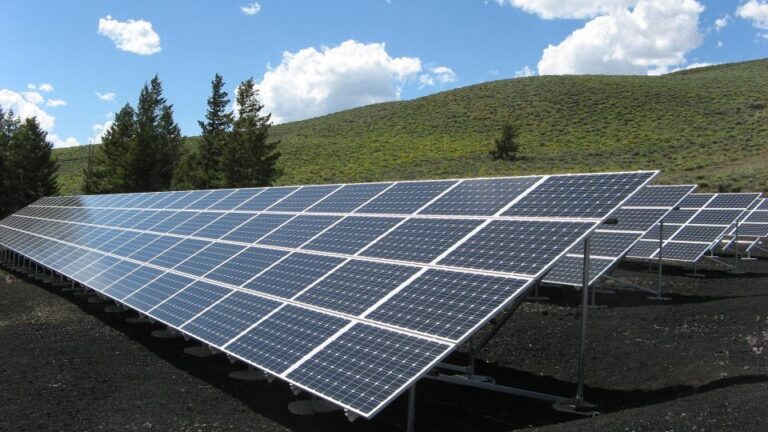

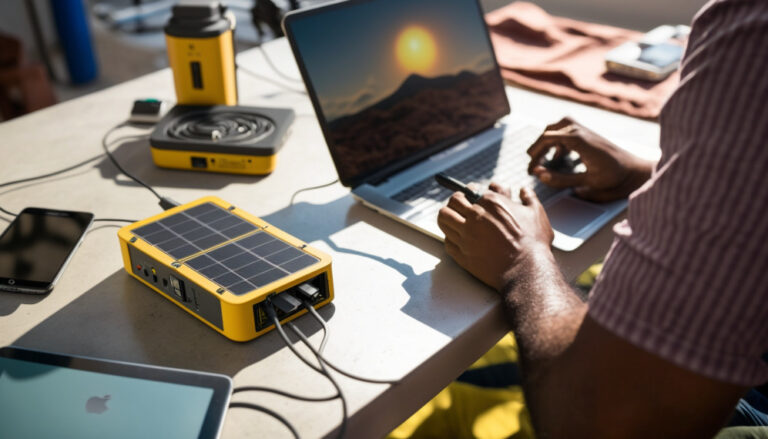
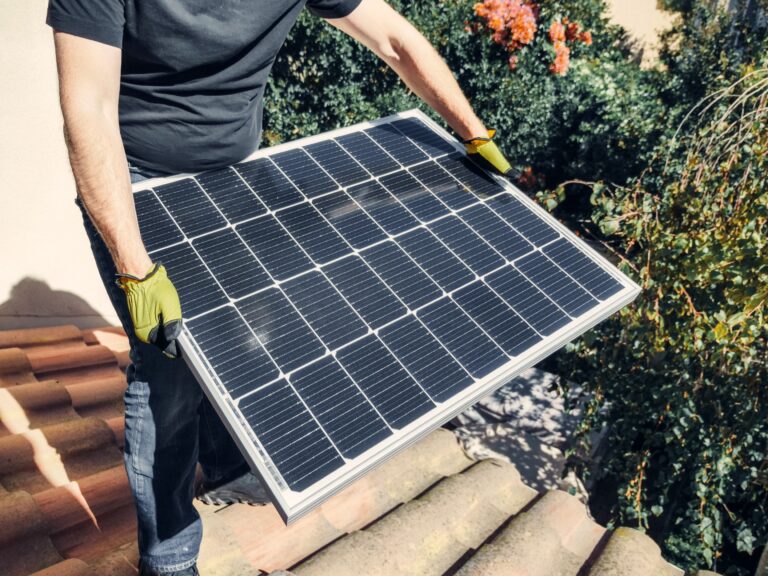
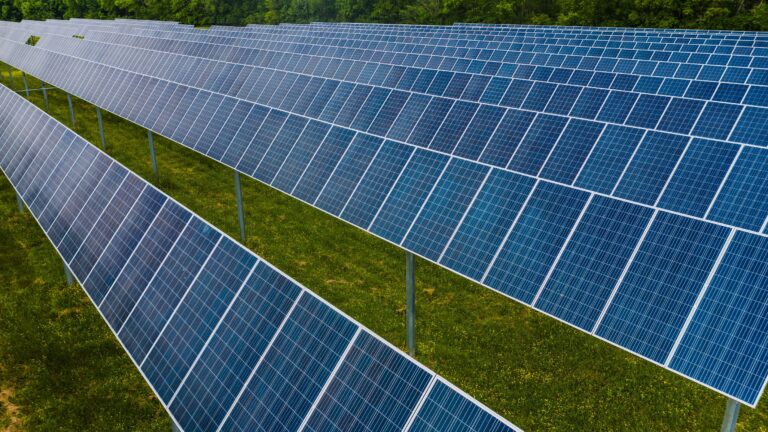
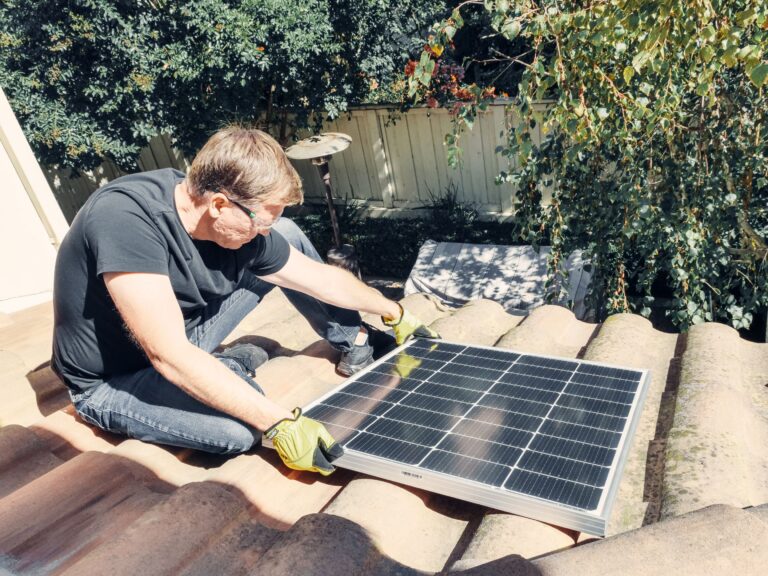
One Comment